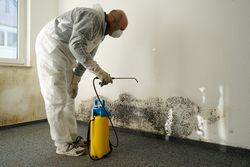
Do you suffer from asthma, fatigue, anxiety, skin infections, aching joints, loss of libido, headaches….?
If these symptoms are sounding all too familiar then it might be time to look for a cause that’s close to home – mould.
What is mould?
Mould is a type of fungus which thrives in damp and humid conditions and in places that aren’t well ventilated. In order to reproduce, mould produces tiny particles called spores, which are carried in the air and can cause health problems if inhaled by people who are sensitive or allergic to them.
Moulds are common allergens with an estimated 40 percent of people having some sort of sensitivity to breathing in mould spores and common reactions include a running or blocked nose, irritation of the eyes and skin and wheezing.
The La Nina phenomenon of 2016 brought excessive rain along Australia’s eastern seaboard and Sydney actually recorded its wettest summer for more than a decade – and our homes and properties are now certainly feeling the effects.
Forget supermarket cleaners
But just how do you tackle mould?
Certainly the supermarket aisles are chock full of cleaning products that promise to kill germs and mould. But experts from Jim’s Hazardous Material Removal say that unless you remove the actual root of the problem, and not just try and scrub it off, it will remain and will continue to make you unwell.
Cleaning remedies such as vinegar and water are a good place to start, but if the mould is entrenched then professional help is definitely recommended.
Tips preventing mould in your home
Maintain proper ventilation
- Turn on exhaust fans, particularly when showering, cooking, doing laundry and drying clothes
- Open windows when weather permits, to improve cross ventilation
Reduce humidity
- Limit the use of humidifiers
- Limit the number of fish tanks and indoor plants
Controlling moisture/dampness
- Repair all water leaks and plumbing problems such as burst water pipes, leaking rooves or blocked rain gutters
- If water does enter your home, make sure carpets are completely cleaned and dried. Get rid of anything that can’t be dried completely.
- Rising damp – keep on top of it! Rising damp can be fixed by installing a waterproof barrier in the wall and by ensuring the weep holes and air vents at the base of your home are uncovered.
If you are concerned about mould in your home and the effect it is having on your families health don’t hesitate to get in touch with the professionals at Jim’s Hazardous Material Removal on 131 546 – we’re here to help.


